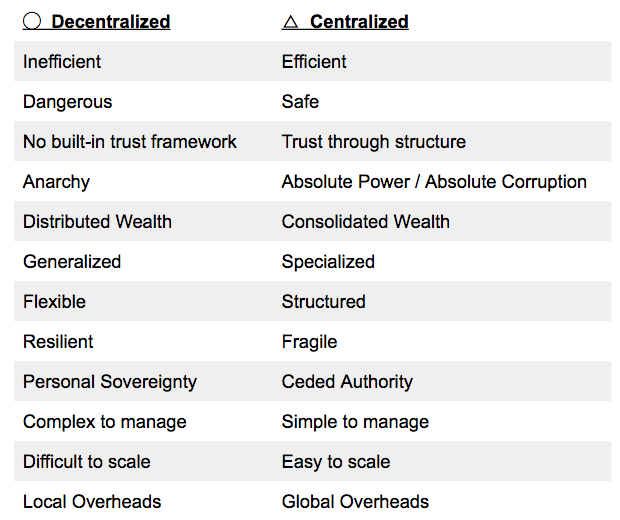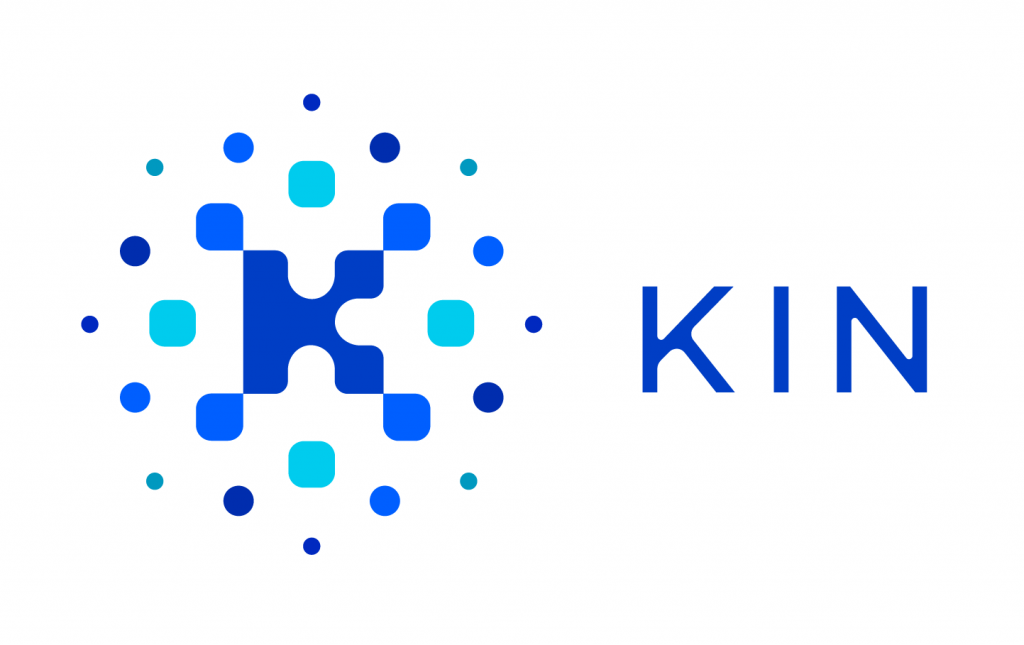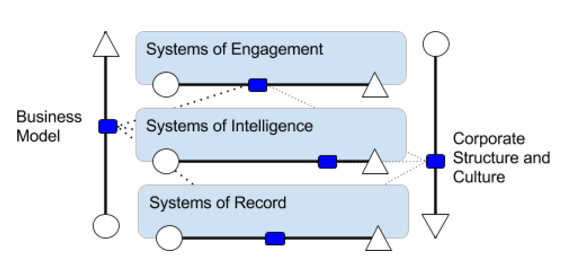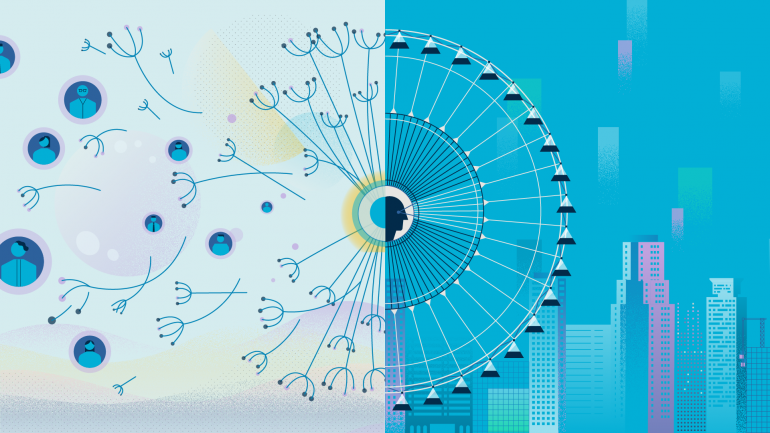We all make choices — building companies or products or communities — around how much control and authority each of the participants has. Do we tightly control our users in order to streamline our product, or do we open up multiple interfaces and allow our users to drive? Do we share our data with others in the belief that a rising tide lifts all boats, or do we hide it to improve our competitive advantage? Do we allow users to deconstruct and reassemble our products, or does that void their warranty? Do we respect current norms of our industry, or do we see the need for disruption? In many instances, these are questions of centralized versus decentralized authority — who has the right and ability to make choices.
Things fall apart; the centre cannot hold;
Mere anarchy is loosed upon the world.
— William Butler Yeats
In this post, we argue that we now have the ability to build more decentralized systems, and that these can often create a competitive advantage over existing solutions.
When we speak of decentralization in the technology community, people tend to jump to blockchain and ethereum. However, the momentum around more decentralized systems goes far beyond these. There are many other examples occurring around us:
- Solar plus battery systems may soon be more efficient than buying electricity from the centralized provider.
- CRISPR/Cas9 makes it possible for small decentralized labs, even schools, to conduct experiments and produce products with less reliance on big legacy infrastructure.
-
Crowdfunding platforms are prolific with greater citizen engagement. ICOs continue to gain traction.
Autonomous vehicles have the promise of using more localized decision making. - Local and personalized 3D printing will move some manufacturing towards the edges.
- Food computers, vertical and indoor farms will produce some types of food closer to consumers.
- Space exploration news is now predominantly from private enterprises.
- YouTube, Facebook, Twitter, Wechat, and others are powered on user generated content, instead of media company content.
- Open source software, and open source communities, are now the norm.
- Sharing economy companies are more decentralized (for the asset owners) than the entities they are replacing.
- Online educational systems are growing and maturing.
- Personal health monitoring, and remote diagnostics, are proliferating.
- Wikipedia has won, although there is always room for improvement.
In almost every industry you can see the signs. These are not moves to decentralization, they are moves towards decentralization. Many buildings do not have enough sunshine or surface area to generate sufficient solar power, so centralized production is still necessary. Sharing economy companies still control their apps and pricing, even while they give asset holders more autonomy. Fully decentralized systems may never exist, just as fully centralized ones do not. So, we are not suggesting a radical transition to highly decentralized structures, but rather significant technological progress that makes partially decentralized systems more realistic.
In fact, signs of further centralization are still easy to find; that is still the prevailing trend. Google’s search and browser consolidation, the challenges to net neutrality and globalization, the shrinking number of public companies, and on and on.
Many industries will be at the pivot point. This is due to software, blockchains, AI, robotics and other technological progress.
However, in many cases we are nearing the pivot point — the point where more decentralized systems can compete effectively with centralized ones both for functionality and efficiency. Many people have speculated a return to decentralization in the past, but although new technologies have started out decentralized, they have always converged back to the centre (see The Master Switch by Timothy Wu).
The internet has centralized around the biggest players, and challenges to net neutrality may well put the final touches on that trajectory. In many ways, the web has failed to become a healthy decentralized ecosystem, tending instead towards anarchy and becoming unfriendly for many participants.
So, why might things be different now?
To answer that, we need to be precise about what decentralization means; the word is used in many ways in many contexts. We are using decentralization to mean how authority is exercised and provisioned in a system. A highly centralized system cedes control to a small group, maybe even an individual.
Hierarchical corporations and dictatorships come to mind. A highly decentralized system gives every user, or group, personal sovereignty. This often comes with more disorganization, inefficiency, and ultimately anarchy. In reality, most systems are a balancing act, and are not at one extreme or the other. Quite often ‘distributed’ is confused with ‘decentralized.’ For us, localized vs distributed is a measure of how work is done, not how authority and control are provisioned.
The attributes of centralized versus decentralized systems are shown below. These are not universal, but rather representative. Consider human activity early in our evolution versus now: Decentralized hunter-gatherers spent their entire day surviving — water, food, shelter, safety. They were generalists in a dangerous and inefficient environment. Today’s centralized workers are highly specialized and highly efficient. This efficiency has great benefits but also comes with some costs: as one example, if centralized infrastructure fails it can impact many people; it is fragile.

We will use a triangle, △, to represent centralization where authority flows up to the apex of the triangle, and a circle to represent decentralization, ◯, where authority is distributed equally everywhere. A given system can be placed along the continuum, typically in relation to other comparable systems.

Much of human history has taken us in one direction; from ◯ → △. From hunters and foragers we formed tribes and towns and cities and nation-states. This was driven by efficiency (through specialization and scalability), safety, and the trust frameworks that emerged to support these — governments and corporate structures, for example. The main things that have fought against this centralization have been uprisings and democracies (anti-trust, for example). Speaking of democracies, the Economist Intelligence Unit maps countries against this spectrum, where functioning democracies retain more personal autonomy than authoritarian regimes.

Corporations have followed the same path: small businesses that can achieve efficiencies when combined lead to mid-sized companies which combine to form large corporations. Synergies (efficiencies in expenses or channel or development) are a major motivation for larger M&A transactions. The efficiency limit for corporations appears to be when the cost of an internal transaction exceeds the cost of an external transaction; this drives the balancing point. This, plus anti-trust measures, limit how centralized companies become.

Could we be at an inflection point now? Will we end up with a different, more decentralized, balance point over the next ten to twenty years? There are a number of signals that would point towards ‘yes’:
- Centralized systems require people to give up some of their autonomy. They cede power to others in the name of efficiency. As more and more people have access to information, and therefore knowledge, they will be less willing to cede that authority. The internet has reached mass adoption in mature markets, and continues to grow quickly in emerging markets. We now all have a control device in our smartphones. The ability for us to participate and make decisions has never been easier.
- Centralized systems are built of highly specialized building blocks; this is primarily what makes them efficient. Automation and AI are best applied to specialized functions, so core ‘central’ systems will be automated. AI has matured rapidly over the last several years, and will accelerate this trend. Highly automated systems will tend towards very low cost, so centralized functions will have lower comparative value and differentiation in the future.
- There is a lot of overhead in centralized systems, both to combat their fragility and to move information and product through the value chain. As an example, the centralized electrical grid has many overheads: power loss with distance, power lines and right aways and their maintenance, redundant power sources in the case of failures, transformers, etc. Centralized food production requires mass transportation and refrigeration, grocery stores, and large amounts of wasted food. Of course, partially decentralized systems also have overheads, but they may be less heavy. Production of solar panels and batteries. Manufacture of vertical farms or food computers.
- Managing decentralized systems is highly complex, and can often not be done by people. However, software (and eventually AI) are good at managing complex systems. Partially decentralized systems are becoming more efficient to build and manage. Consider the growth of social media networks with all their content coming from the edge.
- Trust, and safety, in decentralized systems has been hard to achieve. Witness the current discourse on the web. Blockchains with their distributed computation models have been a big step in this trust equation, even if how they are applied to some of today’s problems is not yet clear. We have a new model for trust and security that does not rely on a central authority; it relies on the consensus and effort expended by the edges.
-
Decentralized business models are starting to emerge. While early, allowing more users and participants to benefit from a business model, in a trusted and accurate way, has many positive implications. (See Steem.io or the recently announced Kin as examples, as well as a myriad of other coin and token offerings).
- The cost of transactions external to a firm will drop due to these technologies, so the maximum size of centralized companies should shrink.
- Numerous other technologies that enable ‘work at the edges’ are maturing, as mentioned above: 3D printing, solar, food computers, etc.
In short, we now have the tools to address the largest issues with decentralized systems: inefficiency, safety, and trust. We also have the tools to do more efficient work at the edges. The combination is powerful.
This transition will not happen quickly. Digital, decentralized trust systems are highly complex and have significant room for improvement. These systems will most likely need to be packaged into higher-level, easier to understand products before end users will adopt them.
The data economy is a good example. Data silos are still being built, and there is not yet a healthy data market. The majority of data is held by a small number of firms. However, these firms are big enough that mergers are unlikely to be acceptable to antitrust legislators — precisely because they have so much data already. While a model for a more open data exchange is not yet widely visible, and users currently seem to accept the ‘learned helplessness’ of trading their personal data for free services, it is likely that the next big disruption will be when existing data silos see competition from more transparent, and shared, data collections.

The online content economy is also in disarray right now. Fake news and anonymous trolls are bringing out the worst in people, allowing them the megaphone of the internet without the social (trust) constructs from real life. This is because the internet grew before there were any strong trust frameworks that could be applied — it shows the danger of a decentralized system without appropriate trust and reputation systems.
It may take significant time to rebuild a healthy interaction space, but there seems to be more room for improvement than there is for further degradation. Frameworks for reputation-based pseudo anonymous systems are now maturing and leveraging technologies such as blockchain to find the right balance between anonymity, reputation and accountability.
Cloud computing may be seen as further centralization, but it is more about localizing and optimizing how work is carried out, and less about how authority is provisioned. Cloud providers allow application owners to remain in control; their advantage is making it cheaper and easier to deploy applications — whether those are highly centralized or partially decentralized.
Given all this, we theorize two things:
1. When given an equal choice, users will be motivated to participate in more decentralized systems in order to maintain more control and authority over their lives; thus businesses that improve personal sovereignty will have an advantage. (There are switching costs, so for new models to displace existing ones the value to users will have to be incrementally better.)
2. Partially decentralized businesses will become more efficient than their centralized counterparts, as measured by the cost of transactions, leading to innovative new companies and business models. This is because the overheads associated with centralization are now relatively large, and the overheads with decentralized systems are being reduced by new technologies.
Uber and Snapchat are recent examples. Ridesharing companies still have central authority over their apps and their pricing and models. However, drivers have been given back authority over where and when they work. There are incentives to balance supply and demand, but drivers will not be fired if they don’t work their assigned shift in their assigned location. Drivers are more likely to maintain their vehicles and be more friendly — because they own the asset and because they need high ratings. These companies run ‘in the cloud’, without the overheads associated with their more traditional counterparts. The balance of control within the ‘system of engagement’ has shifted.
Considering decentralized systems should help guide our thinking on the future of work.
There are new peer-to-peer ridesharing applications that attempt to move the balance of power, the ‘System of Control’, even further towards decentralization (for example, Juno does profit sharing with drivers). If more of the centralized functions of the current players become fully automated — as they will — then the cost of entry for new players will be lower. If they offer more value to the ecosystem, and more autonomy to the participants, then they can disrupt our current choices.
The economics for drivers should increase as a result, as attempts by centralized authorities to keep prices low will no longer work. This disruption comes from choosing a different point on the centralized — decentralized spectrum. To aid that, the extra autonomy given to asset owners (drivers, homeowners) makes it relatively easy for them to list on multiple services.
Snapchat gave users more control over their content — it was more private. That was essential to their product and value proposition. They built around a unique spot on the system of control spectrum.
Another moat: choosing the right Systems of Control
We put this in the context of the recent post on Systems of Intelligence from Jerry Chen at Greylock. As outlined there, companies will increasingly build moats based on Systems of Intelligence. However they will also build moats based on their Systems of Control, which can be viewed as applying to each of the other systems.

The control point for each subsystem may be different. You can be highly decentralized in your System of Engagement (building an open community) while still holding your data and algorithms close (systems of record and intelligence). Or vice versa; use fully open source code but have a unique channel. Each decision in the Systems of Control impacts how much authority and transparency you give to your users.
In B2B businesses, platforms typically give more control than closed products. Data can either be tightly held, or sold as a commodity. The intelligence engine may be open sourced, as the data hurdle is too hard for others to overcome, or it may be highly proprietary but working on easily available data.
The corporate structure and culture also reflects a specific choice. It is hierarchical or flat, planned or holocratic. This will affect your ability to attract and retain talent, but also the impetus behind the control you build into other systems.
Choices in the Systems of Control ultimately lead to different business models. These exist all along the spectrum, and those leaning towards higher decentralization are emerging.
- Many existing internet companies are highly centralized. You give up more of your personal autonomy (your data, the type of content you see) in exchange for a free service. The centralized entity makes decisions for you and presents you targeted information. However, often the content is generated at the edges — by the users. The default monetization is advertising, and this model will likely survive for a long time, although some challengers, such as BAT and Steemit, are emerging that may change the balance of control and allow users to more fully participate in the economics of the system.
- In most B2B businesses you buy a product or a service, and that is the extent of your interaction. On a completely different transaction you may buy stock in the company in order to participate in the company’s overall economics. Most often shareholders and customers are not highly correlated.
- Many games use virtual currencies. The game gives users the feeling of autonomy, but the game is fully controlled by the developer, and the currency is only as trusted as that game developer is. If the developer goes out of business, your virtual currency is useless — it is still a fragile, centralized system, even though part of the appeal to users is the feeling of decentralization.
- Individual blockchain coin companies (app coins) are now springing up everywhere. Those that are single use look a lot like virtual currencies. Those that are accepted for multiple uses (i.e. bitcoin, ethereum) are more inherently decentralized. In some of these business models, being a participant (customer, supplier, user) also makes you an owner because you are using the app coin; the distinction between user and shareholder (between labour and capital) starts to break down. That provides a completely different motivation to the participants. All of these, being built on blockchains, remove central authorities as compared to their traditional counterparts, although consolidation of mining pools is a challenge. Initial Coin Offerings (ICO’s) are now very common.
- There are even companies now offering hedge fund services for underlying blockchain protocols. This is essentially a bet that some decentralized businesses will succeed, as opposed to betting on specific ones.
- There are decentralized models that do not need to be based on blockchain; distribution of ingredients to the edge for 3D on-site manufacturing, versus distribution of sub-components to the centre; education, servicing and personalization for new user-to-user marketplaces; etc.
- Lots of other examples.
This is only a sketch; many more models already exist, and many more are possible at different points on the spectrum. Some of the newer models are…really new; some will certainly fail, but some will succeed.
Finding the right balance will differentiate and protect the companies that get it right. It will differentiate them in the short term by providing a different value proposition to their constituents, and it will protect them in the long term as others will find it hard to attack them based on their defined spot, their moat, within the System of Control.
Future of work
Much has been said about the future of work, and no one has a crystal ball. Considering decentralized systems should help to guide our thinking. Certainly in the evolution proposed here, more and more jobs will end up at the edges, with less in the centre. These ‘edge’ jobs will be ones that are hard to specialize or are highly personalized. Because the decentralized management systems are maturing, it will be possible to make better use of each person’s unique skills, and match them to situations where that skill has value.
This parallels the common thinking that the future of jobs will have more ‘creative’ content than existing ones. It may also imply that less creative skill sets are simply matched better in a larger marketplace — no longer do you apply your skill within the companies that use to control markets; you apply your skill in a large and open marketplace where value can be assigned to any type of work.
As is also often speculated, brand new categories of jobs will continue to appear: making your living on Youtube, WeChat or Uber is just the start. Higher personalization is also quite possible — perhaps the teacher to student ratio will reverse to approach 1:1, matching the learner with a coach that fits them in terms of skill, but also demeanour and learning style.

Many new companies are emerging to manage this transition, from retraining and education to how complexity is managed and opportunities sourced and capitalized on. Multi-sided marketplaces with advanced matching algorithms continue to advance.
Considering Systems of Control
Both startups and existing businesses may find value in specifically mapping out what their existing Systems of Control are. For startups, taking a new spot on the spectrum is part of the attack scenario — changing the fundamental value proposition for constituents is a powerful tool. Users who not only feel more engaged, but are active participants in the ecosystem, can be a significant competitive advantage. By mapping out where the incumbents sit on this spectrum, and specifically choosing a different tact can help drive product and community design and positioning.
For existing businesses, attacks are going to come not only from product innovations, but also from startups having essentially zero centralized costs, and from the value proposition changing. In a future post, we will look at how this shift in centralization interacts with some of the top strategy frameworks, and how you can use this lens to help innovate more aggressively as well as fend off attacks.
Summary
It is useful to look at industries and companies through the lens of the System of Control. In the past, to compete, companies almost certainly had to be centralized entities; the better they centralized the more efficient they were, and the better value they could add to their consumers. This is, to a large extent, the motivation for mergers and acquisitions.
Now, or soon, many industries will be at the pivot point. This is due to software, blockchains, AI, robotics and other technological progress which now allows for trusted decentralized systems that are also highly efficient. More decentralized models will become just as efficient — and perhaps more efficient — than their current centralized counterparts.
This means that new markets will be attacked from different positions on the System of Control spectrum. Highly decentralized or lightly decentralized, a new breed of companies will threaten existing business models and customer motivation, as much as they will their technology and product. Even more middle men will be cut out, as decentralized entities rethink where the value in the system truly lies.
More ‘jobs’ will be created at the edge, as more people with specific skills can find places to apply those skills. We put jobs in quotes, as these will not be traditional jobs, but will be more like the gig economy roles are today, across the spectrum of human activity. Enabling and managing those jobs will also lead to new types of businesses, hints of which we are already seeing today.
No framework is exact or always applicable. Systems of Control along the centralized/decentralized spectrum provides another lens through which to look at an evolving world. Choosing a unique position on this spectrum may lead to large opportunities.
Photo credit Sylvia Yang / iNovia Capital


